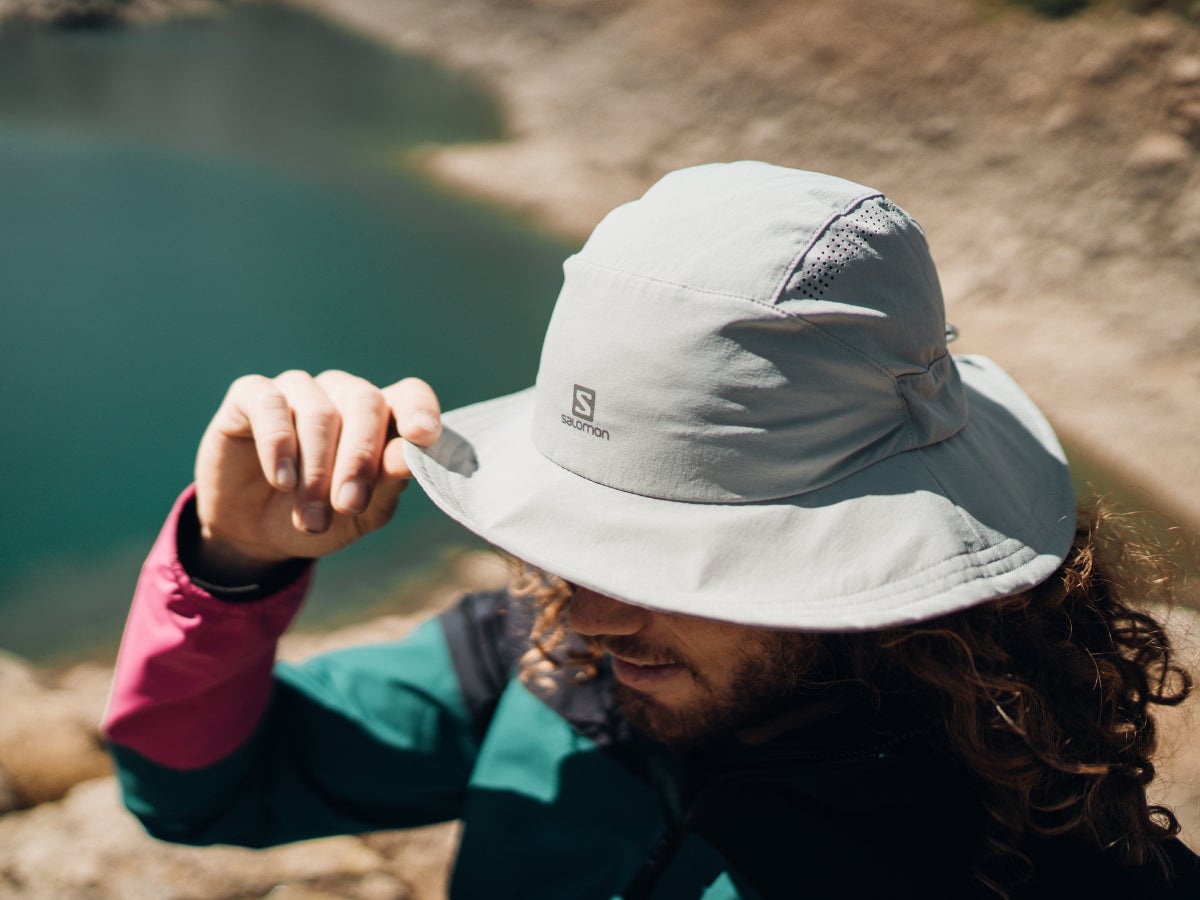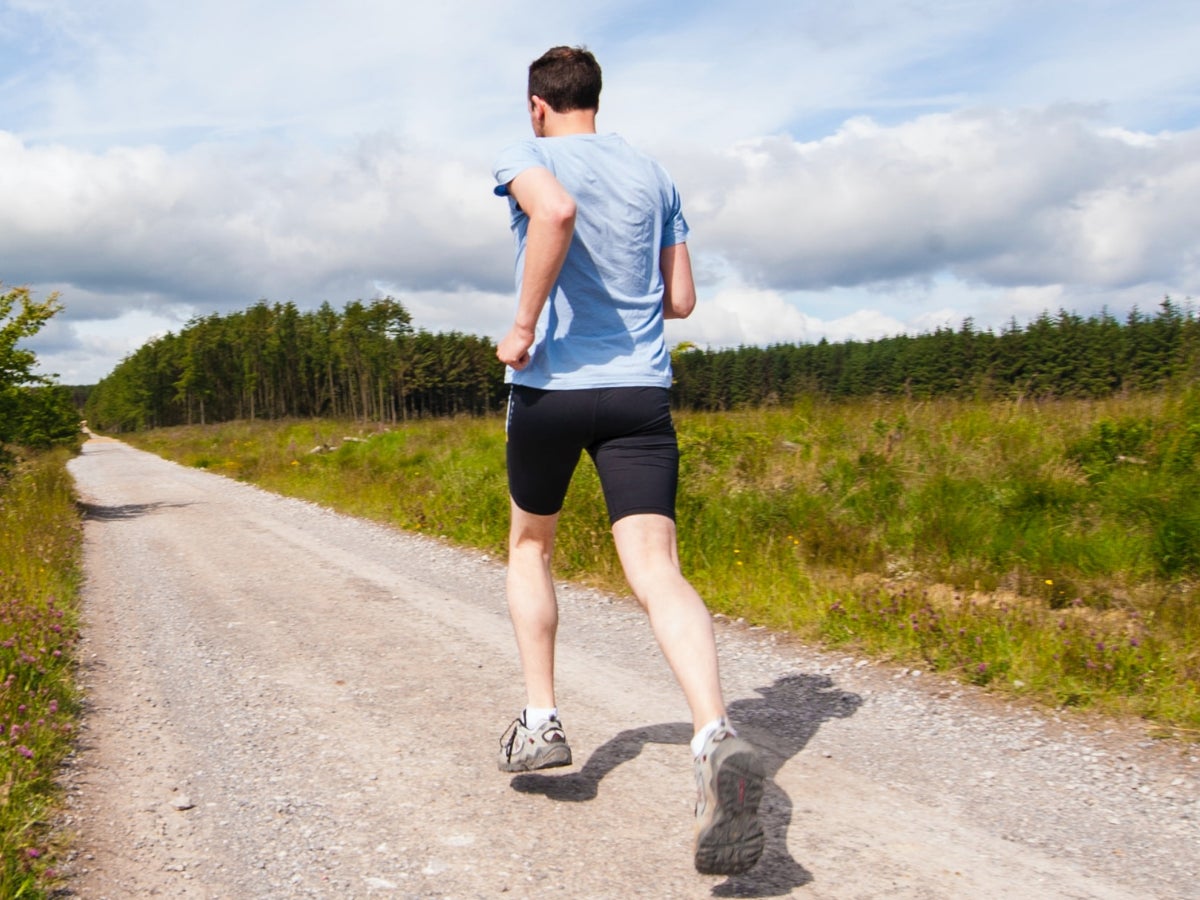How to Run in Hot & Humid Weather: Tips for Staying Cool
Updated: 25 September 2024

Whether you are striving to reach new fitness goals or training for your next race, running in hot and humid conditions is taxing on the body and inevitably affects your endurance and overall performance. But despite the challenges running in hot weather brings, you don't have to forgo your daily training due to rising temps. Instead of running harder, you have to run smarter. From being mindful of your water intake to adjusting your pace and the time of day you work out, there are preventative measures you can take to ensure your safety and maintain your conditioning when running in the heat. Read our top tips below on how to stay cool when running in hot and humid weather.
Tip #1: Stay Hydrated

Before, during, and after your run, it's essential to maintain adequate hydration for your overall health and well-being. This becomes even more important when running in hot weather, as your body tends to sweat more and is at an increased risk of dehydration. If your run lasts longer than an hour, you should bring water while exercising outdoors. There is a wide range of options for carrying water on your person. A handheld bottle straps to your palm and is handy for shorter mileage runs on the road, while a running belt allows you to go hands-free. For trail runs or very long road runs, a hydration vest provides optimal water and storage options.
It is important not to overdo it with excess hydration, which can be nearly as dangerous as dehydration. Because everyone's sweat rate varies, as does the temperature outside, you need to listen to your body and drink when thirsty. Since all that water consumption also flushes out vital nutrients, be mindful of replenishing lost electrolytes, especially on extended runs. Check out our comprehensive guide on hydration for runners for more details.
Tip #2: Wear Sun Protective Gear

While wearing sunscreen when running outdoors is a must, it loses its effectiveness over time and requires reapplication. When running in hotter temps, it's essential to dress appropriately and comfortably from head to toe. Wear a visor or a wide-brimmed hat to shield your face and neck, throw on running-specific sunglasses with non-slip frames that won't slide off when you sweat, and arm sleeves with UV protection to protect your skin from the sun's harsh rays. Some runners opt for drape hats that cover the neck or hats with a pocket to stash ice cubes; both are popular styles with ultra-runners for staying cool on longer runs. For running tops and bottoms, opt for lighter colours that absorb less heat and looser-fitting running gear made from lightweight, breathable performance fabrics with a UPF-certified rating. Look for clothing with vents or mesh that can also help you stay cool.
Tip #3: Run at Dawn or Dusk

Running earlier in the day before the sun rises or later in the evening once the heat index and humidity have dropped are easy ways to keep cool on warmer days. Since the sun's rays are harshest from 10 a.m. to 4 p.m., avoid peak heat hours and get your runs in at dawn or dusk for a more tolerable experience. For those living in humid climates, the heat will probably linger on after sundown, so your best bet is to rise and shine and get a head start on the day. If running early in the morning doesn't come naturally to you, check out our tips on how to become a morning runner, because in this case, the early bird not only gets the worm but gets to do so while avoiding the scorching sun.
Tip #4: Adjust Your Pace

Since running in hot, muggy conditions is stressful on the body, it's important not to overextend yourself. Due to the rising temps, your perceived exertion increases even if your pace stays the same, so adjust your training routine and adopt a more flexible attitude by curbing your performance expectations (you cannot run at a race-ready pace in the heat). Don't worry; it's normal for every runner to see their time and pace slow down during the hotter months, so don't become frustrated. Remember, winter gains are made in the summertime. When the weather conditions become more comfortable, you will notice the faster paces returning. In the meantime, temper your effort to a comfortable running pace to avoid heat exhaustion and cut your runs short. Stay in tune with your breathing and heart rate, making adjustments accordingly. If, at any time, your heart rate becomes too high or you feel overheated, reduce your intensity and take a walk break.
Tip #5: Alter Your Route

Additionally, consider changing your running route to avoid direct sunlight and beat the heat. Whether running at a local park under the welcoming shelter of trees, by a stream of water, or through forest trails, actively seek shade to help cool off. Avoid running on concrete pavements and asphalt, which absorb heat (the floor is lava at this point), and roadways without buildings to obstruct the sun. During an unrelenting heatwave, this also means keeping your workouts indoors by hitting the gym and ticking off the miles on the treadmill or doing a HIIT workout at home.
Tip #6: Use Anti-Chafe Gear

Since you're more prone to sweating in hot and humid temps, anti-chafe products are essential to avoiding painful chafing from salt residue rubbing against your skin. In addition to wearing moisture-wicking and cooling fabrics, anti-chafe sticks (and nip guards for men) provide an extra layer of skin protection to prevent painful rashes, irritation, and friction burns. And don't neglect your feet! Wear shoes with breathable mesh uppers and thinner performance socks, and apply anti-blister products to keep your feet happy and dry. Learn more in our comprehensive article on how to prevent chafing.
FAQ
1. What are the signs of heat exhaustion and heatstroke while running?
Symptoms of heat exhaustion include dizziness, headaches, nausea, and weakness. If you exhibit any of the symptoms above, move indoors to cool off, hydrate, and rest. Do NOT push on through. Otherwise, it can lead to heatstroke, a severe life-threatening medical emergency where the body can no longer produce sweat and cool down, causing your body temperature to rise drastically. Signs of heatstroke are elevated blood pressure, confusion, disorientation, and loss of consciousness, requiring immediate medical care.
2. How to tell if you're dehydrated?
Signs that you are dehydrated include extreme thirst, dizziness, irritability, and dry lips/mouth. If you exhibit any of these symptoms, don't power through a run! Stop immediately, hydrate, cool down, and rest.
2. What is the difference between running in hot and cold weather?
When running in hot weather, your pace naturally becomes slower, your body temperature rises quickly, less oxygen becomes available, you sweat more, your body needs more fluid intake to avoid dehydration, and you have to limit your sun exposure due to the threat of heat-related illnesses. Your heart is also working extra hard to circulate blood flow. All of these factors play a role in decreasing your mileage and affecting your performance. Conversely, in colder weather runs, heat exhaustion does not play a role, so you can cover more ground and run longer distances at a faster pace.
3. What are the benefits of running in hot weather?
Some benefits of running in hot weather include enhanced cardiovascular fitness with improved blood flow, increased caloric burn, and building better heat tolerance, with your body learning to regulate its temperature more efficiently.
4. When is it too hot to run outdoors?
Generally speaking, the consensus is to avoid running outdoors when the temperature is above 37 degrees and the humidity is above 70 to 80%. Be aware of any heat advisories and heat index warnings in the area where you plan to run. High humidity prevents sweat from evaporating, and you can overheat quickly in these conditions. If you begin to feel nauseous, dizzy, or light-headed, stop running immediately and cool off indoors. Seek medical help if your symptoms do not subside.
5. How long does it take to acclimate to running in hot weather?
It can take a couple of weeks for your body to acclimate to running in the heat. Be patient and allow your body time to adjust to running in hot or humid conditions. Start slow, run shorter distances, and gradually build up speed and mileage. Do easy runs at a comfortable, relaxed pace. Now is not the time to obsess about your speed or PR. Instead, maintain a low to moderate intensity and avoid high-intensity workouts such as intervals and tempo runs.
6. How to cool off after a hot run?
While it may be tempting to hop into an ice-cold shower after a hot run, your body will be better off gradually returning to its normal temperature, so avoid the polar plunge. You can use an ice cube on your pulse points (wrist and neck) to cool off and change out of your sweaty clothes. Hydrate and replenish lost fluid and electrolytes with a salty snack. And don't skip the cool-down stretching or foam rolling before proceeding with a refreshing shower or bath.
Summary
Running in hot weather is doable when you take the necessary steps to ensure your safety and overall health. By being prepared with the right gear, maintaining adequate hydration, altering your route and pace, and recognising the signs of dehydration and heat-related illnesses, you can minimise the risks of hot weather running and reap its benefits.




